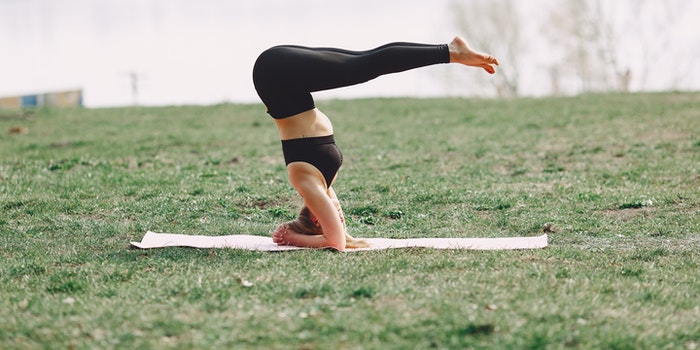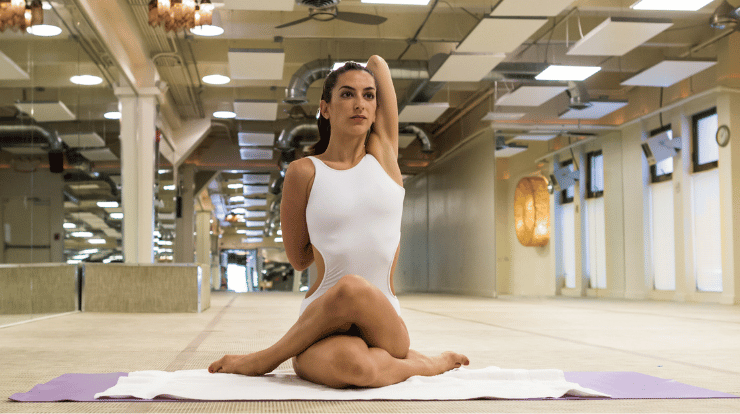
Is Yoga Bad?, Yoga is an ancient practice that is used to maintain physical and mental health. It is a form of exercise that is done both on the floor and in poses. Yoga is one of the most popular types of exercises practiced today, but is it bad for you? In this blog post, we will go over some myths about yoga to see if there are any negative side effects to practicing!
Is yoga bad for you?
The answer is not if you ask me! It might be difficult at first but with practice, everything becomes second nature eventually. Sometimes we need to do something that is uncomfortable for us to get better and this is one of those times. The first thing we need to ask is, just what is yoga and how does it work? It’s a physical exercise system involving postures, breathing exercises, and meditation or relaxation. Some of its principles come from ancient Indian philosophy.
A lot of us are going back to our roots with this new wave in mindfulness so they’re questioning whether this is good for them or not – but really you should always do something because it feels good for you! This way you know when things aren’t aligned anymore too and can make adjustments as needed before anything gets out of control.
Is yoga bad for arthritis?
the answer is a bit more complicated than it seems. yoga isn’t just one thing- if you want to know what’s good for arthritis, you need to find out which yoga practice is right for you and your condition. the best yoga style for arthritis will always be the one that suits your unique needs.
Here’s a quick rundown of the benefits of different types of yoga for those living with arthritis:
- hatha yoga
- vinyasa yoga
- yin yoga
- restorative yoga
1) hatha yoga: a gentle form of physical activity that focuses on stretching muscles and improving posture. This style of yoga can help relieve muscle tightness and reduce joint pain from arthritis, as well as improve blood circulation throughout the body. but some poses can also put stress on joints and aggravate symptoms, so modifications should be practiced to make sure that poses are not performed beyond your body’s capacities.
2) vinyasa yoga: a dynamic type of yoga designed to build strength and flexibility while promoting relaxation. it is an extremely versatile practice, appealing to those with all levels of fitness since you can go at any pace- taking deep breaths between each pose will keep you while building strength. vinyasa yoga helps improve blood circulation while reducing pain and swelling in arthritic joints, as well as easing the stress that can make arthritis symptoms worse.
3) yin yoga: a slow-moving style of yoga focused on stillness and holding the body in static poses for extended periods of time (the longest pose may last up to four minutes). yin yoga increases flexibility and decreases stress in muscles that are affected by arthritis, as well as improves posture. the slow pace also allows for beginners to get used to certain poses without having to rush through them.
But be warned: not all poses are suitable or advised for people living with arthritis- modifications should always be practiced before attempting anything on your own.
4) restorative yoga: a relaxing form of yoga that focuses on “yogic sleep”, which is more akin to meditation than it is to practicing postures. the idea behind restorative yoga isn’t a physical activity, but rather, recuperation and healing from other forms of exercise. studies have shown restorative yoga reduces stress levels and helps improve the overall quality of life for those affected by arthritis.

Is yoga bad for hemorrhoids?
Many people ask, is yoga bad for hemorrhoids? The answer is No, Yoga is good for hemorrhoids because it helps to strengthen your muscles which helps keep you from straining when having a bowel movement. By strengthening these muscles and keeping them tight, you will prevent tearing or rupture of the tissue that causes hemroids in the first place.
Remember to always stop if you feel any pain during yoga practice. Pain is usually a sign that something is wrong and damage may be occurring. Allowing yourself to continue can lead to further complications such as prolapsed hemorrhoids or worse! See your doctor immediately if any pain persists more than a few hours after an exercise session.
Best yoga poses for hemorrhoids?
- HERO POSE (VIRASANA)
- KNEES TO CHEST (ANURASANA)
- PANCAKE POSE (BHARADVAJASANA)
- DONKEY POSE (ASHTANGA MARJARASANA)
- CHAIR POSE (UTKATASANA)
- CRESCENT HEEL STRETCH (ANJALI PRANAMASANA)
- COW FACE POSE (GOMUKHASANA)
HERO POSE (VIRASANA): This gentle pose stretches your leg muscles and helps elevate your heart rate naturally while relaxing your mind. Try this pose in the morning and you’ll feel like a million bucks.
KNEES TO CHEST (ANURASANA): Lay flat on your back and bring your knees toward your chest, keeping both shoulder blades flat on the floor. Try to avoid pressing the wrinkles out of your forehead during this pose as it may cause further tension. As an alternative, elevate both legs by placing them on top of a small pillow or folded towel. Then repeat with the other leg raised off of the floor.
PANCAKE POSE (BHARADVAJASANA): Start in Hero Pose and then flatten yourself completely onto the mat while lifting your hips towards the ceiling until they are parallel to the ground. If you need more support underneath your hips, try placing a small pillow under them. Your head should remain flat on the mat while in this position.
DONKEY POSE (ASHTANGA MARJARASANA): Sitting with your buttocks at the edge of a folded blanket, draw your feet under your knees, and sit up tall. Stretch both arms out in front of you or to the side for better balance. Now inhale deeply and exhale as you dip your torso downward into the pose keeping your chin parallel to the floor.
For an added stretch, extend one arm upward towards the ceiling while balancing on one hand and/or placing that arm against a wall for extra stability (pictured). This is not recommended if you have a bad back.
CHAIR POSE (UTKATASANA): Sit with your legs extended in front of you and feet firmly planted on the floor while holding at your hips for support. Inhale deeply… Exhale as you lift yourself off the ground keeping your knees bent, thighs together and heels pressed into the floor. Hold this pose for 15 seconds before slowly lowering back down to its original position. Repeat 2 more times to gain maximum benefits from this pose.
CRESCENT HEEL STRETCH (ANJALI PRANAMASANA): While resting on your belly, bend one knee and bring it toward your chest while extending the opposite arm out in front of you or alongside your body with the palm facing up. Keep your head down and eyes closed as you gently press this heel towards your buttock (pictured). You can extend your leg out further by wrapping a rolled towel around the ball of your foot and then pressing toward it with both hands. Repeat on another side.
COW FACE POSE (GOMUKHASANA): While lying on your back, bring one knee across the midline of your body making sure that it doesn’t come in contact with your abdomen or chest area. Now take hold of that knee using both hands and gently pull it closer to you until you feel a stretch along the outside of that thigh (pictured).
Is yoga bad for your back pain?
The short answer: not necessarily. On the one hand, yoga is actually great for your back pain and can even alleviate it. On the other hand, if you have an existing condition or injury that affects your back this may not be a good choice of exercise to pursue.
Ultimately while yoga will likely not cause any permanent harm to your back – as long as you use common sense – it also won’t cure your back pain either. By this we mean you should avoid any poses that are risky for your health in general and even more so if you have back problems already.
This includes a wide range of poses and movements including prostrations (chin-ups/bow pose), spinal twists, forward bends, backward bends, etc. But don’t give up just yet! While it may not cure your back issues, yoga can still be a powerful tool for alleviating and even eliminating back pain.
Is yoga bad for bunions?
The short answer is no, yoga is not bad for bunions. In fact, many people with bunions choose yoga as a form of fitness because it doesn’t affect the joint in the same way as other forms of exercise.
But there’s actually more to that answer…
People with bunions sometimes think that any exercise or activity where they must stand and put weight on the joint will be bad for their bunion. This includes yoga, but it’s not true. In fact, the opposite is also not true: standing on a bunion won’t affect your bunion at all! Your feet are meant to bear weight when you walk and run. It does no harm to your joints to do so (though there are other consequences of wearing shoes too small).
The same thing goes for practicing yoga, though obviously with a different movement pattern than walking or running. Even if you adopt a posture where you’re standing on one foot in particular,
This isn’t bad for your foot because
- it doesn’t flex the joint
- you don’t hold the posture long enough for it to hurt your foot.
Is yoga bad for the knees?
yoga can be bad for knees if it is practiced in a way that hurts your body and joints, but the practice of hatha yoga itself isn’t harmful as long as you treat it with respect.
it’s good to look at how your practice makes you feel and adjust accordingly:
if something is hurting or feels painful while you are doing it, modify or even avoid doing it (except any poses that require more flexibility than you have — just hang out with those without trying too hard). what does pain mean? pain means tearing something, especially ligaments and/or tendons; injury generally takes longer to recover from than pain. if muscles ache there may be inflammation due to microtears and mild burning sensation when the muscle is used but inflammation will generally go away with continued use.
people who have had knee surgery should consult with their doctor or physical therapist before doing anything related to yoga, as this may put stress on the tissue and reinforce postural habits which put undue pressure on the knees.

Is yoga bad for vertigo?
Is yoga bad for vertigo? A question many people ask
The short answer to the question is this: NO. You can practice yoga even with severe vertigo symptoms and still see positive results. The only thing you cannot do is perform poses that require balance or inversions because those will agitate your inner ear more than they calm it down (gravity acts your body in a way that makes your head fall toward the ground, for example).
Inversions are also riskier during times like when your endolymphatic fluid has decreased, which happens when you stand up suddenly after lying down for a while or have been inactive for some time.






